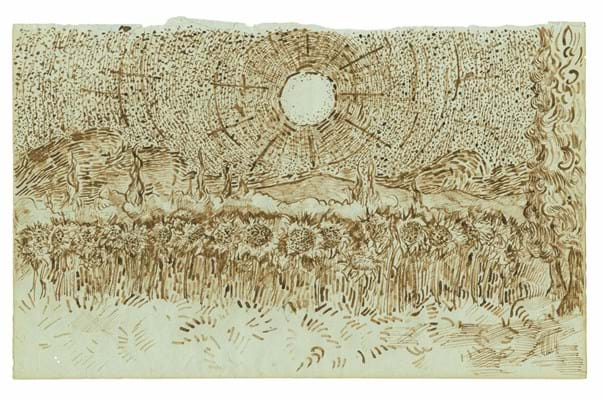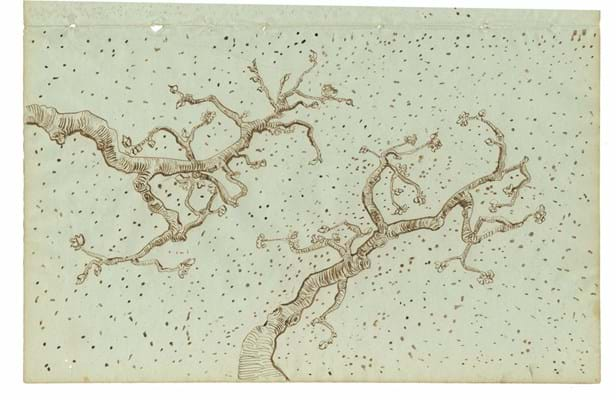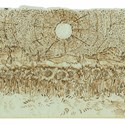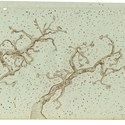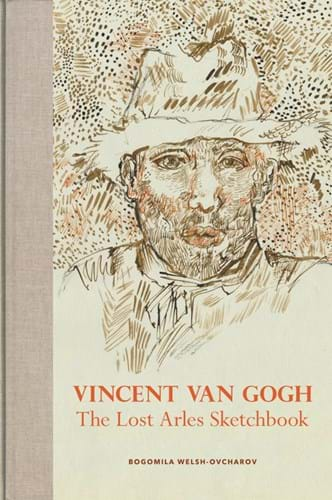
The subject of the much-publicised book, released on November 15, is described in the foreword by art historian Ronald Pickvance as “the most revolutionary discovery in the entire history of Van Gogh’s oeuvre. Not one drawing, not ten, not 50, but 65 drawings”.
Pickvance and Canadian art historian Bogomila Welsh-Ovcharov claim the sketches were created during Van Gogh’s time in Arles and Saint-Rémy-de-Provence but have been “hidden for more than 120 years”.
However, in a statement on November 29, the museum said the drawings were “much later imitations of Van Gogh’s drawings by someone inspired by reproductions of his work”.
The museum listed its reservations highlighting the use of brown sepia shellac ink not found elsewhere in Van Gogh’s work (he used black ink that had later discoloured), topographical errors to some of the drawings and a provenance it deemed unreliable.
The sketchbook is thought to be that mentioned in a diary used in the Café de la Gare in Arles, recording the gift of a drawing book to café owners Joseph and Marie Ginoux.
Welsh-Ovcharov says the book remained with the Ginoux family until 1944 before passing to a neighbour and later to her daughter. It was ‘discovered’ by Franck Baille, founder of the Hotel des Ventes de Monte-Carlo.
The sketchbook contains a ‘self portrait’, sketches of Paul Gauguin and of major landmarks featured in the artist’s best-known paintings.
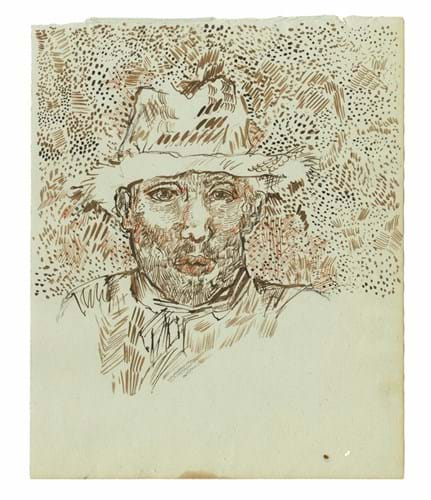
‘Self-Portrait with Straw Hat’, one of the works featured in ‘Vincent van Gogh: The Lost Arles Sketchbook’ that is said to date from July or August 1888. Image copyright: éditions du Seuil.
However, the museum – which receives around 200 requests every year to authenticate paintings, drawings, letters and prints – says in its withering critique: “The sketchbook in no way reflects Van Gogh’s rapid development as a draughtsman from the spring of 1888 to the spring of 1890.”
It added that the artist “lacked Van Gogh’s precision, refinement, sense of chiaroscuro and ability to integrate a range of drawing techniques into a compelling whole”.
It concludes: “There is a straightforward explanation for all of the album’s idiosyncrasies: namely, that these are much later imitations of Van Gogh’s drawings by someone inspired by his work.
“While we have no desire to carry on this debate ad infinitum through the press, we have brought together all our comments and questions here in order to clarify our position.”
Debate Challenge
Pickvance and Welsh-Ovcharov have challenged museum experts to a debate on the enigmatic sketchbook. The museum responded: “We will need to have all the hard facts first. We therefore call on the publisher and the author to provide a clear and open response to all our comments.
“Until they have, we see no point in a scholarly debate and our contribution to the discussion ends here: we will no longer respond to further questions.”
The French publishers of the book responded by saying they were “surprised that the Van Gogh Museum declined the offer of a public debate among experts”. They also questioned the museum’s motivation against “the spreading of this truth”.


